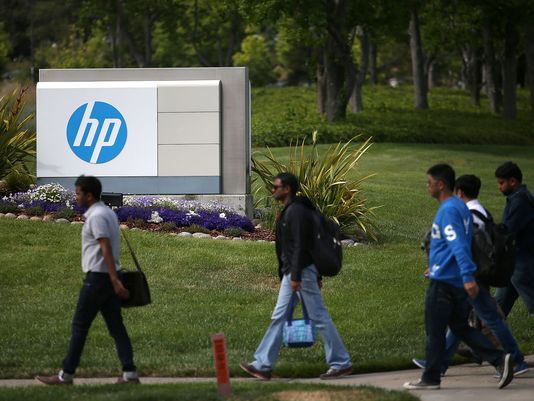Hewlett-Packard, which presently employs more than 300,000 employees, has announced it will be cutting 10% of its workforce, equal to roughly 25,000 to 30,000 positions.
The company’s decision follows 55,000 jobs cuts announced earlier this year.

The job losses will affect Hewlett Packard Enterprises (HPE), which is splitting from the company’s printer and PC business. HPE will focus on business and government agencies, while the PC and printing divisions will target the consumer market.
All told, the company believes this round of cuts will save $2.7bn in annual costs, though it is worth pointing out that actually carrying out these cuts will cost HP $2.7bn.
“We've done a significant amount of work over the past few years to take costs out and simplify processes and these final actions will eliminate the need for any future corporate restructuring,” chairman and chief executive Meg Whitman explained at a meeting for Wall Street analysts.
In terms of industry reaction, the number of layoffs HP has announced has taken many by surprise, as they’re a bit higher than what everyone was expecting. What’s more, most believe this is not the end of mass layoffs for HP.
HP has avoided leaking information about where layoffs were going to occur. The company has revealed though, that in addition to saving on overall costs, slimming down its employee roster will help it change the nature of its workforce. Specifically, the number of HPE workers in what the company calls “low-cost locations” is now expected to rise from 40% to 60% by 2018.
For those unfamiliar with HP’s history, the company was started in 1939 and today, despite the layoffs being detailed in this article, it is one of the largest companies in the world — revenues this year are expected to surpass the $50bn benchmark. If one is looking for where things went wrong, you could point to a series of bad decisions in the 2000s as being one of the reasons why today’s HP feels the need to make changes from within. During this timeframe, the company acquired Compaq for $25bn (2002), made a $14bn investment in EDS (2008), and laid down $11bn for Autonomy (in 2011).
Despite what the company saw back then as strategic acquisitions, by 2012 HP had officially lost its position as the global leader of PCs to Lenovo.
In terms of stock value, HP’s share price peaked during the dot.com boom in 2000, with two additional surges in 2007 and 2010. Since then, it has lost about 60% of its value.
Via BBC
Advertisement
Learn more about Hewlett-Packard





